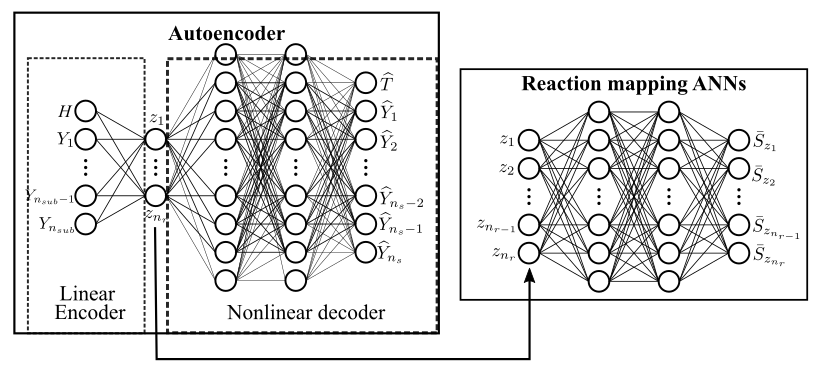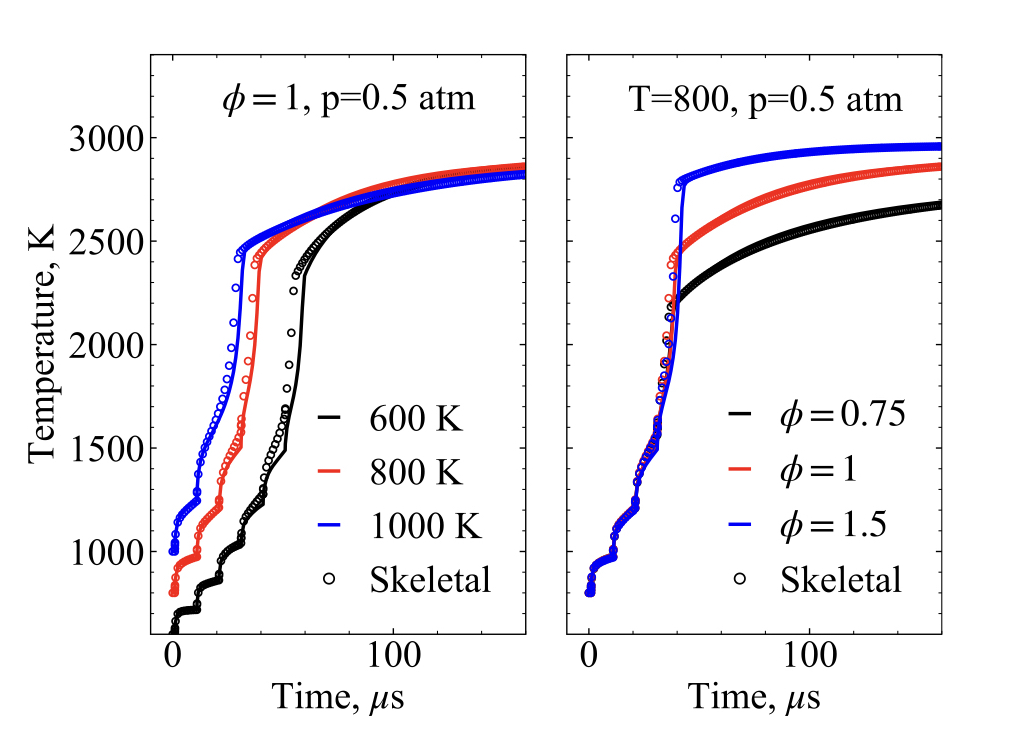projects
Data-driven low dimensional manifolds
Reacting flow simulations are computationally costly due to the large number of chemical species involved, whose coupled evolutions require solving for as many differential equations as there are chemical species. The goal of this project is to use machine learning techniques to create a low-dimensional, data-driven representation of the chemical state and evolve this low-dimensional representation forward in time both stably and accurately for predictive capabilities.


Chemical kinetic mechanism reduction
Generating skeletal kinetic mechanisms by removing unimportant species and reactions is critical for making reacting flow simulations computationally traceable. One of my first Ph.D. projects was extending a graph-based kinetic reduction methodology to a new plasma-assisted combustion (PAC) application.
More recently, in collaboration with the National Renewable Energy Lab, I've worked on reducing sustainable aviation fuel (SAF) kinetic mechanisms to aid in the development of next generation aircraft engine technologies.
LES-PDF turbulent combustion modeling
The LES-PDF modeling framework is a method for modeling chemistry within a large eddy simulation (LES). In the LES-PDF framework, notional particles are used to represent the chemical state, which are convected by the flow and evolve via a mixing model to approximate diffusive processes, and reactions, which are directly computed from the kinetic mechanism.
The LES-PDF simulations are the end goal test for our low-dimensional manifolds and I recently implemented the LES-PDF framework into our new CFD solver called NGA2.
